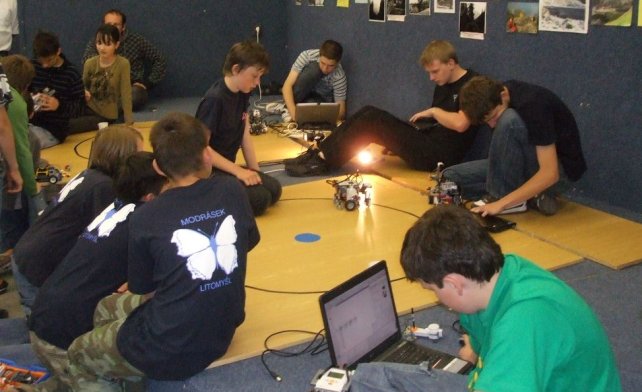RoboCup Junior Slovakia 2009
(summary 2008, slovenská verzia)
Pavel Petrovič, 20.5.2009.
This year's contest in building and programming robots for primary and secondary schools - RoboCup Junior Slovakia, prepared by Slovak Society of Electronics in cooperation with the Association Robotika.SK, was held in the very late term in the middle of the beautiful nature of Northern Slovakia, in Secondary School of Electrotechnics in Liptovský Hrádok. The event attracted around 120 robotics enthusiasts from Slovakia and Czech Republic.
The contest consists of the following disciplines:
- RoboSoccer (Generation I)
- RoboRescue
- RoboDance
- Construction task

|
After a positive feedback from the previous year, we decided to go for a specific task in the construction task category again. The teams were to design, build, program, and test their robots - space shuttles that complete a space service mission of the Hubble Space Telescope. The robot had to start from the Earth, reach the orbit, install instruments, unload astronauts to perform the installations, load the astronauts, and return safely back to the Earth. The task specification is in Slovak language and contains a schematic picture:
This year, we chose to design our own original task.
The technical level in the RoboCup Junior categories is increasing from year to year. One could still see the classical LEGO RCX robots, the NXTs dominated, but several robots were of the original design from scratch using customized construction, electronics, and sensors, and SW/HW platforms such as BASIC/PIC, C/AVR. Both finalists used robots of this kind. Likewise in the category Rescue, there was a robot with specilized sensors based on two AVR CPUs, and LEGO robots with specialized multiplexors that allowed to connect more light sensors than usually. The Rescue arena was borrowed from our Austrian friends (many thanks!) so it complied with the international standards.
Detailed results can be found at Robotika.SK: Results.
Some pictures are available: